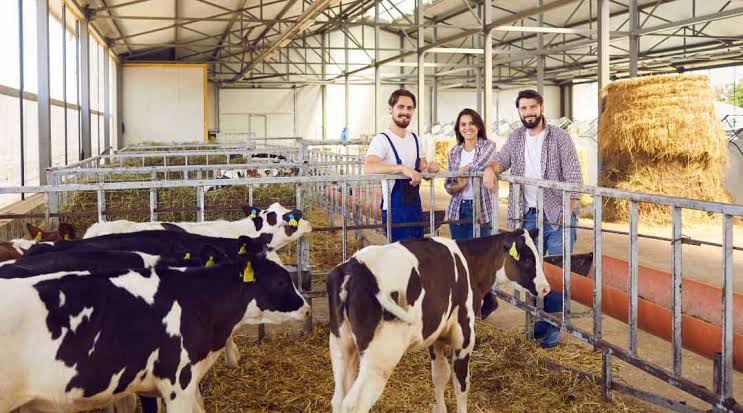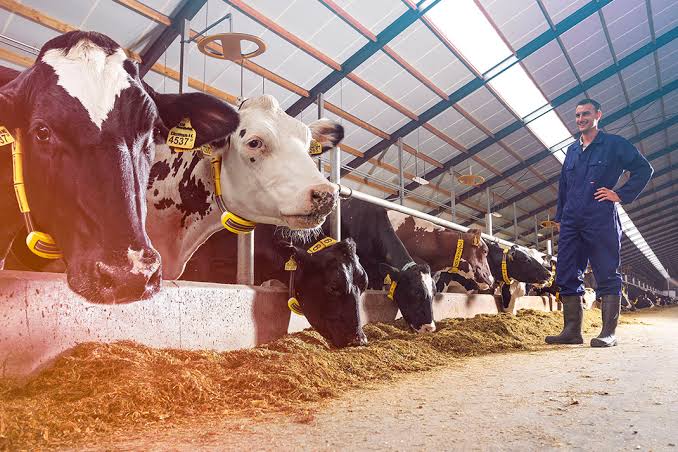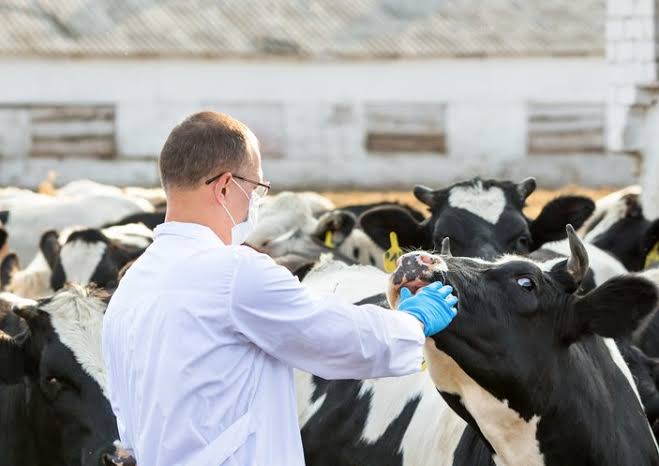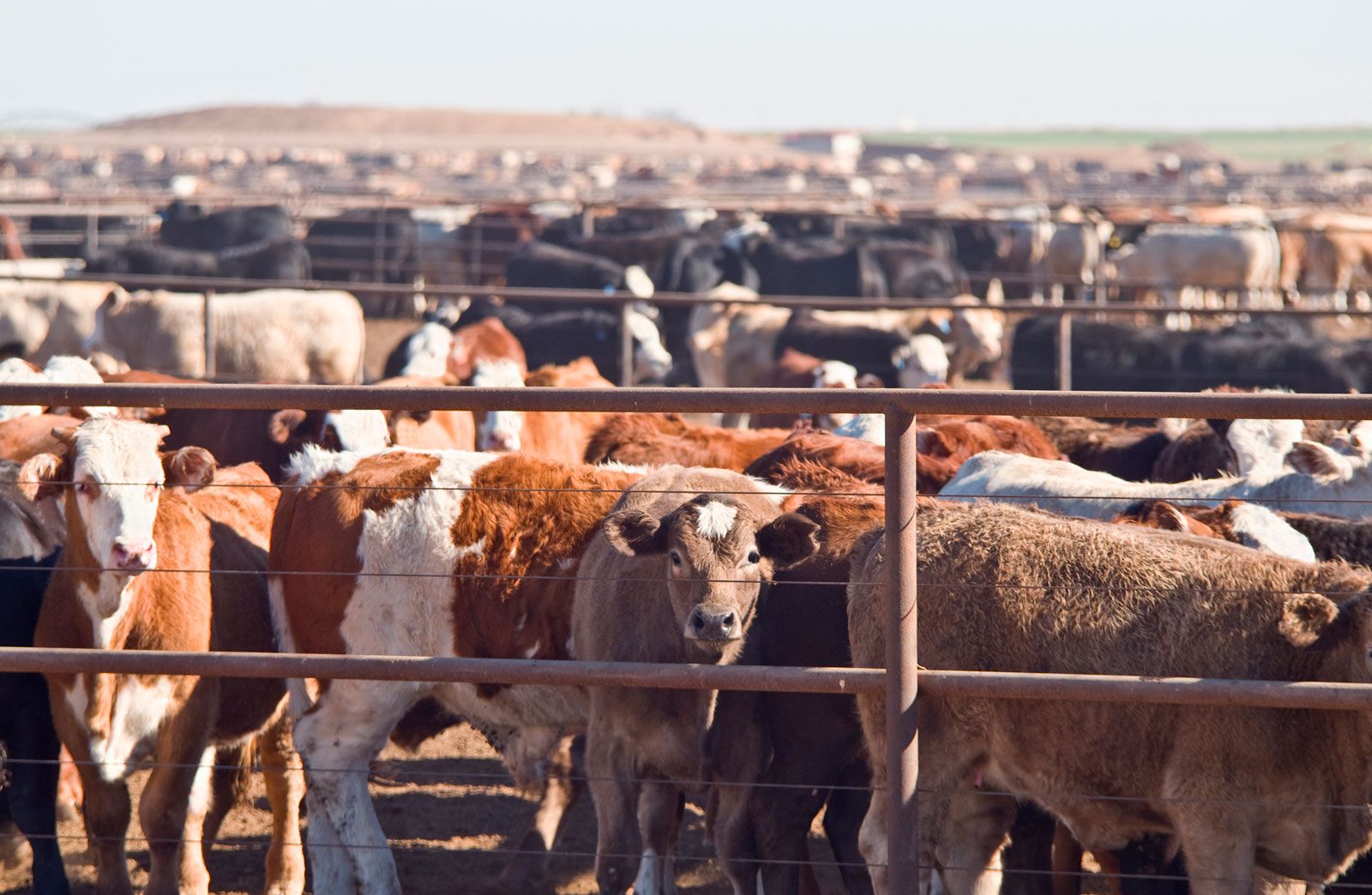Livestock production in Nigeria has played a pivotal role in the country’s agricultural landscape, shaping not only the economy but also the cultural practices of its people. The history of livestock farming has been an integral part of Nigerian society, where cattle, sheep, goats, poultry, and other animals were reared for food, income, and traditional purposes.
The development of livestock production in Nigeria can be traced back to pre-colonial times when communities engaged in subsistence farming and animal husbandry to meet their daily needs. Over time, this practice evolved, influenced by changing societal structures, economic demands, and technological advancements.
The history of livestock production in Nigeria was primarily based on traditional practices where communities relied on pastoralism and mixed farming. Pastoralism, a system where herders moved with their animals in search of fresh pastures, was widespread in the northern parts of Nigeria.
The Fulani people, one of the largest ethnic groups in West Africa, are known for their pastoralist traditions, raising cattle for milk, meat, and hides. These cattle-rearing practices have contributed significantly to the Nigerian economy, particularly in the northern region, where pastoralism remains a crucial livelihood for many.
In the southern regions, mixed farming practices were more common, where small-scale farmers combined crop cultivation with animal husbandry. This approach allowed families to diversify their food sources and income streams, contributing to food security and household resilience.
The colonial era brought significant changes to livestock production in Nigeria. During this period, the British colonial administration introduced modern agricultural techniques, including veterinary services, improved breeding programs, and disease control measures.
These initiatives were aimed at increasing livestock productivity and improving the quality of livestock products such as meat, milk, and leather. Veterinary services played a crucial role in controlling diseases like rinderpest, which had devastating effects on cattle populations in the late 19th and early 20th centuries.
The introduction of improved breeds also enhanced productivity, particularly in cattle and poultry farming. However, these advancements were limited in scope and primarily focused on the export of livestock products to Europe, leaving many small-scale farmers with limited access to modern agricultural resources.
Post-independence Nigeria witnessed further developments in livestock production as the government sought to modernize the agricultural sector. In the 1970s and 1980s, several agricultural development programs were initiated to promote livestock farming, improve rural infrastructure, and provide farmers with access to credit and technical support.
These programs were aimed at boosting livestock production to meet the growing demand for animal protein, particularly in urban areas. The establishment of large-scale commercial farms also became more prominent during this period, with private investors and government agencies investing in poultry, cattle, and pig farming.
Despite these efforts, small-scale farmers continued to dominate the livestock sector, contributing the majority of livestock products consumed in the country. The key principles of livestock production in Nigeria today are guided by the need to balance traditional practices with modern innovations. One of the fundamental principles is animal health and disease management.
Healthy livestock is essential for ensuring productivity and profitability in livestock farming. This involves regular veterinary care, vaccination programs, and the implementation of biosecurity measures to prevent the spread of diseases.
In recent years, the Nigerian government, in collaboration with international organizations, has launched initiatives to improve animal health services, particularly in rural areas where access to veterinary care is limited. These initiatives have contributed to the reduction of livestock diseases and improved the overall health of animal populations across the country.
Another key principle of livestock production is nutrition and feeding management. Adequate nutrition is critical for the growth, reproduction, and productivity of livestock. Farmers must ensure that their animals receive a balanced diet that meets their nutritional needs at different stages of development. In Nigeria, traditional feeding practices have often relied on natural grazing and crop residues.
However, modern livestock production emphasizes the use of improved feed formulations and supplements to enhance animal growth and productivity. The introduction of feed mills and commercial feed production has provided farmers with access to quality feed, particularly in poultry and dairy farming, where nutritional requirements are more specific.
Breeding and genetics are also crucial principles in livestock production, as they determine the quality and productivity of livestock populations. In Nigeria, traditional breeding practices have been based on natural selection, where animals are bred for their adaptability to local environmental conditions.
However, modern livestock farming has introduced selective breeding programs that focus on improving specific traits such as meat and milk production, disease resistance, and reproductive efficiency. These breeding programs have resulted in the development of improved breeds that are better suited to commercial farming.
The Nigerian government and private sector have also invested in artificial insemination programs to enhance breeding efficiency and accelerate genetic improvement in livestock populations. Sustainable livestock production is another key principle, particularly in the face of environmental challenges such as climate change, land degradation, and water scarcity.
In Nigeria, sustainable livestock production involves the efficient use of natural resources, the adoption of climate-smart agricultural practices, and the promotion of environmental conservation. Pastoralists and small-scale farmers have traditionally practiced sustainable livestock farming by rotating grazing areas, maintaining vegetation cover, and using organic manure to improve soil fertility.
However, the increasing demand for livestock products has put pressure on natural resources, leading to overgrazing, deforestation, and water pollution. To address these challenges, the Nigerian government and development partners are promoting sustainable livestock practices that minimize environmental impact and ensure the long-term viability of livestock farming.
Read Also: Commercial Floriculture
The Main Systems of Livestock Management

Livestock management involves the practices and systems used to care for and raise animals for various purposes such as meat, milk, hides, and other products. The choice of livestock management system depends on factors such as available resources, climate, geography, and the purpose of production.
In Nigeria, livestock management has been shaped by both traditional and modern practices, influenced by the history of livestock production in Nigeria, where subsistence and commercial farming have coexisted.
1. Extensive System of Livestock Management: The extensive system of livestock management is a traditional method, widely practiced in regions with vast areas of grazing land, such as the northern parts of Nigeria.
In this system, animals such as cattle, sheep, and goats are allowed to roam freely over large areas in search of pasture and water. This method is often employed by pastoralists, such as the Fulani herdsmen, who move their livestock across different grazing lands depending on the season.
Key characteristics of the extensive system of livestock management include low input costs, minimal infrastructure, and a heavy reliance on natural resources.
However, this system also comes with challenges, such as overgrazing, conflicts over land use, and vulnerability to climate change. Although it is a sustainable system in terms of using natural resources, it often results in lower productivity compared to more modern systems of livestock management.
2. Semi-Intensive System of Livestock Management: The semi-intensive system of livestock management is a hybrid approach that combines elements of both extensive and intensive systems. In this system, animals have access to grazing but are also provided with supplementary feeding and shelter.
This system is commonly used in regions with limited grazing land or where there is a need to improve livestock productivity without the full investment required for an intensive system.
A key advantage of the semi-intensive system of livestock management is that it allows farmers to increase production while still utilizing natural pastures. It is often practiced by small-scale farmers who may not have the resources for fully intensive operations but want to improve the quality and quantity of their livestock products.
In some cases, a semi-intensive type of livestock production is called controlled grazing or rotational grazing, where livestock is moved between designated grazing areas to prevent overgrazing and allow for pasture regeneration.
3. Intensive System of Livestock Management: The intensive system of livestock management is a more modern, industrialized approach where livestock is kept in confinement and provided with all the necessary inputs for optimal growth and productivity.
This system is commonly used in poultry, dairy, and pig farming, where animals are housed in specialized facilities such as barns, feedlots, or cages. The animals are fed high-quality feeds, given veterinary care, and monitored closely for health and productivity.
One of the main advantages of the intensive system of livestock management is that it allows for high productivity and efficient use of space, making it suitable for commercial operations.
However, it also requires significant investment in infrastructure, feed, and labor. Additionally, this system can lead to environmental concerns, such as waste management and the potential for disease outbreaks due to high animal density.
4. Semi-Intensive Livestock Farming: Semi-intensive livestock farming is a variation of the semi-intensive system, where animals are reared with a combination of grazing and controlled feeding. It is particularly useful in areas where land is scarce, but there is still a need to integrate livestock farming with other agricultural activities.
Farmers practicing semi-intensive livestock farming often provide animals with supplemental feed to ensure their nutritional needs are met, especially during periods of drought or low pasture availability.
This approach is especially common among smallholder farmers in Nigeria who may raise a few cattle, goats, or poultry alongside their crops. By balancing the benefits of natural grazing with additional inputs, farmers can increase their livestock’s productivity without the high costs associated with full intensive farming.
Again, a semi-intensive type of livestock production is called controlled or restricted grazing, depending on how the movement of animals is managed. In some regions, this approach allows farmers to balance environmental sustainability with increased productivity.
Effective Management Practices in Livestock Production

Livestock production is an integral part of agriculture, providing food, income, and employment for millions of people around the world. In Nigeria, livestock farming is not only essential for economic development but also a key component of cultural heritage.
However, ensuring the success and sustainability of livestock farming requires the adoption of effective management practices. These practices help farmers optimize productivity, maintain the health and welfare of animals, and ensure environmental sustainability. Below, we explore the key aspects of effective livestock management.
1. Animal Health and Disease Management: The health of livestock is fundamental to maintaining productivity and profitability in livestock farming. Effective disease management begins with regular veterinary care, including vaccination programs and routine health checks.
Preventing and controlling diseases is crucial, as outbreaks can devastate livestock populations, leading to significant economic losses. Farmers should also implement biosecurity measures to prevent the introduction and spread of diseases.
These include controlling access to livestock facilities, disinfecting equipment and vehicles, and isolating new or sick animals from the rest of the herd. In Nigeria, common livestock diseases like foot-and-mouth disease, Newcastle disease in poultry, and parasitic infections must be closely monitored to avoid widespread health issues.
Early detection and treatment of diseases are vital, as delaying interventions can reduce productivity and even lead to mortality. Farmers must be trained in recognizing symptoms and know when to call for professional veterinary assistance.
2. Proper Nutrition and Feeding Practices: Nutrition is one of the most important factors in livestock production. Animals need a balanced diet to grow, reproduce, and produce high-quality products such as meat, milk, and eggs.
The nutritional requirements of livestock vary by species, age, and production stage, and meeting these needs ensures optimal health and productivity. For instance, in the intensive system of livestock management, animals are often fed scientifically formulated feeds that meet their specific nutritional requirements.
In more traditional systems, like the extensive system of livestock management, animals graze on natural pastures, but this can lead to deficiencies in certain nutrients, especially during the dry season. In such cases, farmers can supplement grazing with additional feed sources such as hay, silage, or commercial feed concentrates.
Water is another essential component of livestock nutrition. Farmers should ensure that animals have constant access to clean, fresh water. Water quality should be regularly tested, as contaminated water can lead to diseases and negatively affect livestock performance.
3. Breeding and Reproduction Management: Effective livestock management also involves sound breeding and reproduction practices. Selective breeding helps improve desirable traits in livestock, such as faster growth rates, better disease resistance, and higher milk or egg production.
Breeding programs should be based on the genetic improvement of livestock, and farmers must ensure they are using the best breeds suited to their specific environment and production goals.
Artificial insemination (AI) is a modern technique that can improve the efficiency of breeding in livestock farming, particularly in semi-intensive livestock farming.
AI allows farmers to use superior genetic material from proven sires, leading to better quality offspring. This technique also reduces the risks associated with natural mating, such as injury to animals.
Additionally, farmers must closely monitor the reproductive health of their animals. Regular health checks, proper nutrition, and appropriate veterinary care during pregnancy are critical for ensuring healthy births and reducing the risk of reproductive disorders.
4. Housing and Environmental Management: Proper housing and environmental management are critical for the welfare and productivity of livestock, especially in semi-intensive and intensive systems of livestock management. Livestock housing should provide protection from extreme weather conditions, predators, and diseases.
The design of housing facilities should take into consideration factors such as ventilation, temperature control, and space requirements to ensure the comfort of the animals. In poultry farming, for example, well-designed cages or barns can help maintain a consistent temperature and reduce the risk of disease transmission.
Similarly, in cattle and dairy farming, barns should be well-ventilated to prevent respiratory diseases and ensure that animals have adequate space to move around. Waste management is another crucial aspect of environmental management in livestock production.
Accumulation of animal waste can lead to environmental pollution and health hazards if not properly managed. Farmers should implement waste recycling practices such as composting or biogas production to turn animal waste into valuable resources.
5. Record Keeping and Data Management: Effective livestock management requires proper record keeping. Keeping detailed records allows farmers to track the performance of their animals, monitor growth rates, reproduction cycles, and milk or egg production, and identify any potential health or nutritional issues.
Records should include information on vaccinations, health treatments, feeding schedules, and breeding activities. In modern livestock farming, technology is increasingly being used to assist with data management.
Software tools and digital platforms can help farmers collect and analyze data in real-time, making it easier to make informed decisions about animal health, nutrition, and breeding.
Proper data management not only helps improve productivity but also enhances traceability, which is becoming increasingly important in the livestock industry. Traceability ensures that consumers can follow the journey of livestock products from farm to market, which is essential for food safety and quality assurance.
6. Training and Capacity Building: Farmers need ongoing education and training to stay updated on best practices in livestock management. As new technologies and innovations emerge, farmers must be equipped with the knowledge and skills to implement these advancements in their farming practices.
Training programs should focus on areas such as animal health, breeding, nutrition, and environmental management. In Nigeria, government and non-governmental organizations often provide training and extension services to help farmers improve their livestock management skills.
These programs are particularly important for small-scale farmers who may not have access to modern technologies or veterinary services. By investing in capacity building, farmers can improve their productivity, reduce losses, and contribute to the sustainability of the livestock sector.
7. Sustainable Practices and Environmental Conservation: Sustainability is a growing concern in livestock production. Unsustainable practices, such as overgrazing and improper waste management, can lead to land degradation, water pollution, and greenhouse gas emissions.
To address these challenges, farmers must adopt sustainable livestock management practices that minimize environmental impact. One such practice is rotational grazing, where livestock is moved between different pastures to allow vegetation to regenerate.
This approach prevents overgrazing and helps maintain soil fertility. Additionally, integrating livestock farming with crop production can create a more sustainable system by recycling nutrients between animals and crops.
Another sustainable practice is the use of alternative feed sources, such as agricultural by-products or insect-based feeds, to reduce the environmental footprint of livestock production.
Read Also: Flowers Post-Harvest Handling
Frequently Asked Questions on Principles of Livestock Production and Management

1. What are the key principles of livestock production?
Livestock production involves principles such as animal health, proper nutrition, breeding, housing, and welfare management. These principles focus on optimizing productivity while maintaining the ethical treatment of animals and ensuring sustainability.
2. How does proper nutrition impact livestock productivity?
Adequate nutrition is essential for animal growth, reproduction, and productivity. Livestock need balanced diets rich in protein, energy, vitamins, and minerals to meet their physiological needs. Poor nutrition leads to reduced productivity, poor growth rates, and health issues.
3. Why is disease management important in livestock farming?
Disease management ensures the health and welfare of livestock, preventing productivity loss and economic damage. This includes regular veterinary care, vaccinations, and biosecurity measures to prevent the spread of diseases.
4. What is the role of breeding in livestock production?
Selective breeding enhances traits such as faster growth, better disease resistance, and higher milk or meat production. Techniques like artificial insemination (AI) improve the genetic quality of livestock, leading to better offspring performance.
5. How does proper housing benefit livestock?
Housing protects animals from extreme weather, predators, and diseases. In intensive systems, well-ventilated and temperature-controlled facilities reduce stress and promote better health and productivity.
6. How can farmers improve the sustainability of livestock production?
Farmers can adopt practices such as rotational grazing, waste recycling, and integrating livestock with crop farming to reduce environmental impact. These practices help maintain soil fertility and water quality while promoting long-term productivity.
7. Why is record keeping important in livestock management?
Keeping records helps farmers track animal health, production rates, and breeding cycles. This data allows them to make informed decisions and improve overall farm management efficiency. Digital tools also help with real-time tracking and analysis.
8. What is biosecurity, and why is it important in livestock farming?
Biosecurity involves practices that prevent the introduction and spread of diseases in livestock. These include controlling farm access, disinfecting equipment, and isolating new or sick animals. Strong biosecurity measures protect livestock health and prevent costly disease outbreaks.
9. How does climate change affect livestock production?
Climate change impacts livestock through altered weather patterns, such as droughts and floods, which affect pasture availability and water resources. Rising temperatures can also stress animals, reducing productivity and increasing susceptibility to diseases.
10.What role does animal welfare play in livestock management?
Animal welfare ensures that livestock are treated humanely, provided with adequate food, shelter, and medical care. Good welfare practices lead to healthier, less stressed animals, which in turn improves productivity in terms of growth rates, reproduction, and milk or egg yields.
11. How can technology improve livestock production?
Modern technology, such as automated feeding systems, health monitoring devices, and genetic improvement tools, allows farmers to increase productivity, efficiency, and accuracy in managing livestock. These technologies help optimize feeding, improve breeding outcomes, and monitor animal health in real-time.
Read Also: 14 Health Benefits of Bitter Leaf (Vernonia Amygdalina)
Do you have any questions, suggestions, or contributions? If so, please feel free to use the comment box below to share your thoughts. We also encourage you to kindly share this information with others who might benefit from it. Since we can’t reach everyone at once, we truly appreciate your help in spreading the word. Thank you so much for your support and for sharing!

